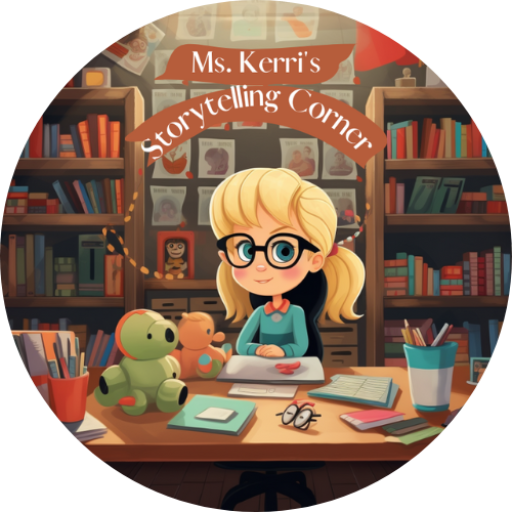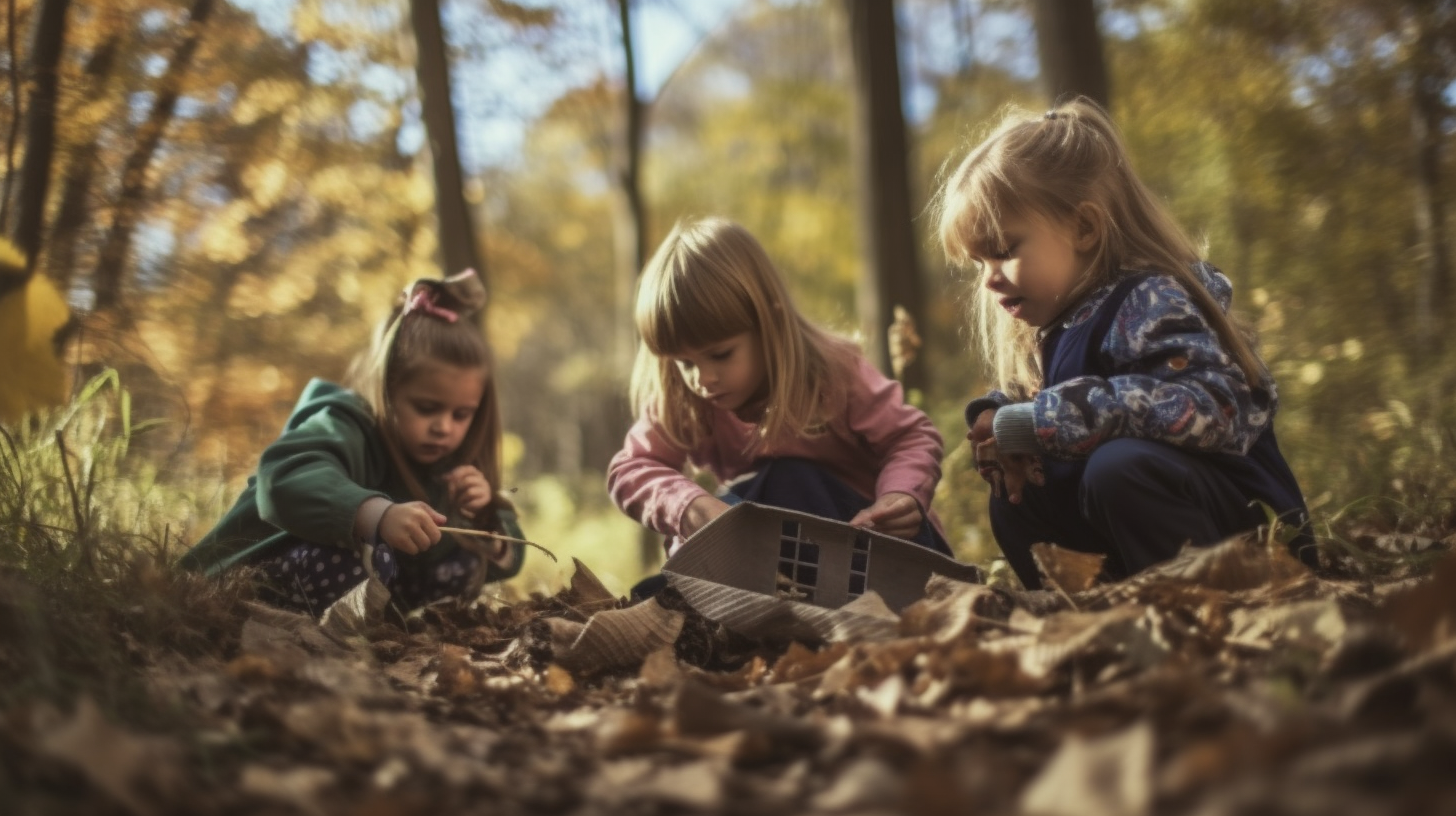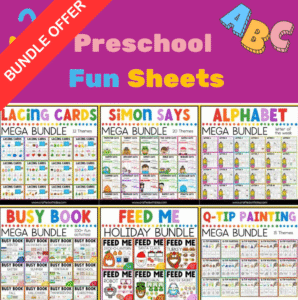Embarking on outdoor adventures is a fantastic way for preschoolers to connect with the world around them. Through hands-on activities that engage their senses, foster creativity, and encourage exploration, young children can develop a deep appreciation for nature. This article delves into a variety of activities designed to immerse preschoolers in the wonders of nature, from scavenger hunts and nature art to sensory explorations, gardening, and nature walks combined with journaling. These experiences not only entertain but also educate, instilling in children a sense of curiosity and respect for the environment.
Key Takeaways
- Wildlife scavenger hunts can transform local parks into exciting playgrounds of discovery, promoting careful examination and identification of various life forms.
- Nature art projects, like leaf prints, allow preschoolers to express their creativity while fostering a connection with the environment.
- Sensory explorations in nature engage preschoolers’ five senses, enhancing their observational skills and mindfulness of their surroundings.
- Hands-on gardening activities teach children about growth and responsibility, encouraging self-sufficiency and independence through nature tasks.
- Nature walks paired with journaling provide an immersive educational experience that fosters scientific inquiry and language development in young learners.
Wildlife Scavenger Hunt: A Discovery Adventure
How to Organize a Scavenger Hunt
Organizing a scavenger hunt is a breeze with a little preparation. Start by creating a checklist of items for the children to find. Think leaves, rocks, flowers, and even animal tracks. Make it a mix of the common and the curious to spark interest.
- Prepare the checklist: Include items like leaves, rocks, and flowers.
- Form teams: Pair up children or let them explore with adults.
- Designate areas: Keep the hunt safe by setting boundaries.
- Respect nature: Remind participants not to pick plants or disturb wildlife.
Encourage kids to use their observation skills and critical thinking as they search for nature’s hidden treasures.
Remember, the goal is to engage preschoolers in a fun learning experience. Keep the scavenger hunt simple, interactive, and full of discovery!
Encouraging Observation and Identification
To truly engage preschoolers in the wonders of nature, observation and identification are key. Start by equipping them with simple tools like magnifying glasses and binoculars. This not only excites them but also enhances their ability to see details they might otherwise miss.
- Provide a checklist of items to find, such as different types of leaves, insects, or birds.
- Use descriptive language to help them identify features and patterns.
- Celebrate each discovery with enthusiasm, reinforcing their observational skills.
By turning observation into a game, children learn to pay closer attention to their environment, fostering a deeper connection with nature.
Encourage children to share their findings with peers or create a collective mural of collected items, promoting social skills and teamwork. Remember, the goal is to make learning about nature an adventure that sparks curiosity and joy.
Celebrating the Joy of Discovery
The culmination of a scavenger hunt is not just about the items found, but the spark of joy in each discovery. Encourage preschoolers to share their finds, fostering a sense of accomplishment and camaraderie. Celebrate every leaf, rock, and bug as a treasure, and watch as their eyes light up with the thrill of exploration.
- Reflect on the adventure with a group discussion.
- Create a ‘Discovery Wall’ where children can display their finds.
- Award certificates for participation, fostering a sense of pride.
Embrace each child’s unique findings as a step towards nurturing their innate curiosity and love for nature.
Nature Art: Creative Expression Through the Environment
Leaf Prints and Natural Crafts
Dive into the world of leaf prints! Encourage preschoolers to dip various leaves in non-toxic paint and press them onto paper to reveal the intricate patterns and shapes that nature offers. Each leaf becomes a unique stamp, transforming a simple activity into a gallery of natural art.
Nature provides the perfect canvases, from the delicate veins of a leaf to the smooth surface of a rock. Let children explore their artistic side by painting vibrant scenes on these natural backdrops.
For a hands-on experience, try these activities:
- Stamp Art Activity – Autumn Dry Leaves – Mighty Kids: Let kids have fun with autumn leaves. Check out how they can do this fun dry leaves stamp art activity, a Montessori-based art project.
- Rock Painting: Collect smooth stones and let the creativity flow as kids paint animals, flowers, or nature scenes.
- Stick Collages: Combine sticks, leaves, and seeds to create patterns or shapes on cardboard, marrying art with the essence of nature.
Fostering Artistic Instincts with Nature
Unleash the imagination of preschoolers with nature art! Nature serves as the perfect palette for little hands to create and learn. By using elements like leaves, twigs, and flowers, children can make stunning leaf prints and natural collages.
- Leaf prints can be made by painting one side of a leaf and pressing it onto paper.
- Twigs can be arranged into shapes or figures.
- Flowers can be pressed and used in collages or as paintbrushes.
Engaging in these activities not only sparks creativity but also hones fine motor skills. It’s a beautiful blend of art and environmental awareness, teaching children the value of nature’s gifts.
Encourage your preschoolers to express their artistic side while learning to cherish and respect the environment. It’s a lesson in creativity and conservation that will stick with them for life.
Connecting with the Environment through Art
Art and nature blend seamlessly, offering preschoolers a canvas to express their creativity and bond with the environment. Engaging in nature art projects not only fosters artistic skills but also instills a deep appreciation for the natural world. Encourage your little ones to gather leaves, sticks, flowers, and pinecones to create their own masterpieces.
- Leaf Prints: Press leaves onto paper to explore patterns and textures.
- Flower Collages: Arrange petals and leaves to form vibrant designs.
- Butterfly Paintings: Use colors and symmetry to bring butterflies to life.
These activities are not just about creating art; they’re about nurturing a sense of stewardship for nature. By using natural materials, children learn the importance of conserving and respecting our planet.
Remember, the goal is to celebrate nature’s beauty through art, while teaching our preschoolers to use and return resources with care. Let their imagination soar and their hands get dirty in the most educational and joyful way!
Sensory Explorations in the Great Outdoors
Incorporating Sensory Elements in Nature Activities
Engage preschoolers’ senses with hands-on experiences. Let them touch, smell, and listen to nature’s diverse offerings. Create a sensory-rich environment that captivates young minds.
- Touch: Soft moss, rough bark, and smooth stones
- Smell: Fragrant flowers, fresh soil, and crisp leaves
- Listen: Rustling leaves, chirping birds, and babbling brooks
Encourage exploration and curiosity. Guide them to feel the textures, inhale the scents, and attune their ears to the sounds of the outdoors.
By integrating sensory activities, children deepen their connection with nature and enhance their learning. It’s not just about seeing—it’s about experiencing the world with all their senses.
Engaging the Five Senses with Nature
Preschoolers learn best when they can touch, smell, see, hear, and taste the world around them. Engage all five senses to create a full-bodied nature experience that will captivate their young minds.
- Touch: Encourage children to feel the bark of trees, the softness of moss, and the roughness of rocks. A ‘Touch With Nature Hunt‘ can be a playful way to learn about different textures.
- Smell: Have them sniff flowers, rain-soaked soil, and fresh pine needles to discover the array of scents in nature.
- See: Ask them to observe the variety of colors and shapes in leaves, the patterns of animal tracks, and the dance of light through the trees.
- Hear: Listen for the rustle of leaves, the chirp of birds, and the whisper of the wind.
- Taste: While taste should be approached with caution, exploring edible plants with an expert can be an exciting sensory adventure.
By integrating sensory elements into outdoor activities, preschoolers can form a deeper connection with the environment and enhance their observational skills.
Promoting Mindful Observations
Mindfulness in nature transforms simple activities into rich, cognitive learning experiences. Encourage little explorers to pause and breathe in the scents of the outdoors, to listen to the rustle of leaves, and to feel the textures of bark and stones. This sensory engagement lays the groundwork for deeper awareness and connection with the environment.
- Use all senses to explore
- Document findings in a journal
- Guide discovery with questions
Mindfulness is not just a practice but a journey of discovery, one that preschoolers can embark on with joy and curiosity.
By fostering mindfulness, we cultivate a generation of children who are not only aware of their surroundings but also of their inner selves. This awareness is a cornerstone of emotional intelligence, nurturing growth and introspection.
Cultivating Independence with Hands-On Gardening
Planting Seeds: A Lesson in Growth and Responsibility
Introducing preschoolers to the magic of gardening begins with the simple act of planting seeds. Each tiny seed is a promise of growth, a tangible lesson in patience and responsibility. As they cover their seeds with soil, children learn the foundational steps of nurturing life.
- Fill small pots with potting soil
- Plant a variety of seeds
- Place in a sunny area
- Water regularly
Gardening develops children’s self-confidence as they see they can plant the seeds and watch them grow and harvest a crop at the end.
Observing the life cycle of plants through these activities, children witness the transformation from seed to sprout to bloom. They engage with the cycle of life, understanding their role in the care and keeping of their green charges. This hands-on experience fosters a sense of accomplishment and a deeper connection with nature.
Watering Plants and Garden Care for Preschoolers
Introducing preschoolers to the joys of gardening nurtures not only plants but also young minds. Watering is more than a chore; it’s a lesson in care and consistency. With montessori principles in mind, we guide little ones through project-based learning for children, turning each watering can tilt into a moment of growth.
- Step 1: Show them how to gently water at the base of the plant.
- Step 2: Explain the importance of regular watering.
- Step 3: Celebrate their role in the plant’s life cycle.
By involving preschoolers in garden care, we lay the foundation for early childhood learning. They learn the value of responsibility and the impact of their actions on the living environment.
Preschool activities like these foster a connection with nature and encourage curiosity. They’re not just watering plants; they’re cultivating life skills and a love for the earth.
Encouraging Self-Sufficiency through Nature Tasks
Fostering independence in preschoolers is a cornerstone of the Reggio Emilia approach. By engaging in hands-on gardening tasks, children learn to care for their environment and take ownership of their contributions. Boldly embrace nature’s classroom to cultivate life skills.
- Assign simple gardening tasks:
- Watering plants
- Weeding
- Harvesting
These activities not only teach responsibility but also patience and the rewards of nurturing growth. Encourage little ones to make decisions, such as choosing which seeds to plant, fostering a sense of autonomy.
By nurturing plants, children understand the cycle of life and their role in it. They see firsthand the fruits of their labor and the importance of consistent care.
Remember, every small task is a step towards self-sufficiency. Celebrate each achievement, no matter how small, to build confidence and a can-do attitude.
Nature Walk and Journaling: Exploring and Recording the World
Making the Most of Your Nature Walk
To truly engage with nature, a walk should be more than just a stroll; it’s an opportunity for discovery and learning. Equip your little explorers with a journal or sketchpad, turning their observations into a creative journey. Encourage them to use their senses to connect with their surroundings, from the rustling leaves to the cool touch of a smooth rock.
- Listen for the whispers of the wind
- Look for patterns in the leaves
- Smell the earth after rain
- Touch the textures of different barks
- Taste the freshness of the air
By fostering curiosity, you create a space for questions to bloom and knowledge to grow. Guide them to find answers in the world around them, nurturing a sense of wonder and respect for nature.
Remember, a nature walk is a chance to observe and collect items from nature, such as leaves, which can later be used for art projects or a nature investigation table. It’s a hands-on experience that enhances gross motor skills and instills a love for the outdoor environment.
Creating a Nature Investigation Table
Transform your preschooler’s curiosity into a structured exploration with a Nature Investigation Table. This hands-on activity is a springboard for scientific discovery and sensory engagement. Here’s how to get started:
- Gather: Encourage children to collect natural items during their outdoor adventures. Leaves, rocks, and flowers make perfect specimens.
- Organize: Sort the finds into categories such as color, size, or texture. Use simple containers or trays for display.
- Examine: Provide magnifying glasses and let the little explorers take a closer look at their treasures.
- Document: Offer paper and crayons for rubbings or drawings, capturing the details of each item.
By interacting with their collected items, preschoolers can observe patterns and changes in the natural world, fostering a deeper connection with their environment.
Remember, the goal is to spark joy and wonder in the hearts of young learners as they touch, see, and learn from nature’s bounty.
Instilling Scientific Inquiry and Language Development
Nurturing early learning through nature can be a delightful journey of discovery. Encouraging your child to ask questions about their environment is a cornerstone of developing scientific inquiry. It’s not just about the answers they get, but the process of thinking critically and curiously.
- Chat about the surroundings during your nature walk.
- Recite nursery rhymes that relate to what you see.
- Read stories that echo the outdoor experience.
- Tell tales of the natural world and its wonders.
By engaging in these simple activities, you’re weaving a rich tapestry of words and ideas, fostering language development in a meaningful way.
Remember, repetition and patience are key. Each new word is a stepping stone to a broader vocabulary. And with every step, you’re paving the way for your child to become a confident communicator, eager to explore and understand the world around them.
Embark on a journey of discovery with ‘Nature Walk and Journaling: Exploring and Recording the World’. This enriching activity not only connects you with the beauty of the natural environment but also allows you to capture your experiences and reflections in a personal journal. Whether you’re a seasoned naturalist or a curious explorer, our website offers a treasure trove of resources to enhance your outdoor adventures and journaling practices. Dive into our collection of articles, tips, and printable resources designed to inspire your next nature walk. Visit Ms. Kerri’s Story Telling Corner today and start your journey towards a deeper appreciation of the world around you!
Conclusion: Embracing Nature’s Classroom
As we wrap up our exploration of hands-on activities for preschoolers, it’s clear that the great outdoors offers an unparalleled learning environment. From wildlife scavenger hunts to nature art projects, each activity is a stepping stone towards fostering a deep connection with the natural world. Encouraging young children to engage with their environment not only nurtures their curiosity but also lays the foundation for a lifetime of appreciation and stewardship of nature. Let’s continue to inspire the next generation by integrating these fun, educational experiences into their early years, ensuring that they grow up with a sense of wonder and responsibility towards the planet they call home.
Frequently Asked Questions
What are some outdoor activities for preschoolers to connect with nature?
Outdoor activities for preschoolers include wildlife scavenger hunts, nature art projects like leaf prints, sensory explorations, hands-on gardening, and nature walks combined with journaling. These activities encourage exploration, creativity, and a connection with the environment.
How can I organize a wildlife scavenger hunt for preschoolers?
To organize a wildlife scavenger hunt, create a list of common local wildlife and natural items for children to find. Provide them with a map or clues, and accompany them to help them identify different species and elements in nature. Celebrate each discovery to encourage their sense of wonder.
What are some nature art activities for young children?
Nature art activities can include creating leaf prints, assembling natural crafts, and using elements like sticks, stones, and flowers to make art. These projects help foster artistic instincts and provide a tactile, engaging way for children to express their creativity with items found in nature.
How can sensory explorations be incorporated into nature activities?
Sensory explorations can be incorporated by engaging the five senses: letting children touch various textures, smell different plants, listen to wildlife sounds, taste edible safe plants, and observe the beauty of nature. Sensory bins and nature walks are great ways to incorporate these elements.
Why is gardening beneficial for preschoolers?
Gardening is beneficial for preschoolers because it teaches them about growth, responsibility, and the natural world. Planting seeds, caring for plants, and observing the life cycle of flora promote independence and self-sufficiency while providing hands-on learning opportunities.
What should I include in a nature walk and journaling activity for kids?
For a nature walk and journaling activity, include observation tasks, collection of natural items for a nature table, and discussion prompts to encourage scientific inquiry and language development. Provide children with a journal to record their observations and experiences during the walk.


Ms. Kerri’s Corner provides a exciting virtual space for preschool learning. Through a variety of engaging activities, she exposes young minds to early math, literacy, science and social-emotional skills in a developmentally appropriate way. Centers for blocks, art, books and music allow children to explore hands-on learning at their own pace. Guided lessons subtly introduce number sense, letter sounds and narrative thinking. Careful observation gives insight into each child’s progress across domains. Viewers are also invited to participate, reinforcing that their ideas are valued. By making learning fun yet purposeful, Ms. Kerri lays the groundwork for future academic success while fostering creativity and imagination. Her program offers preschoolers valuable screen-based learning experiences.










